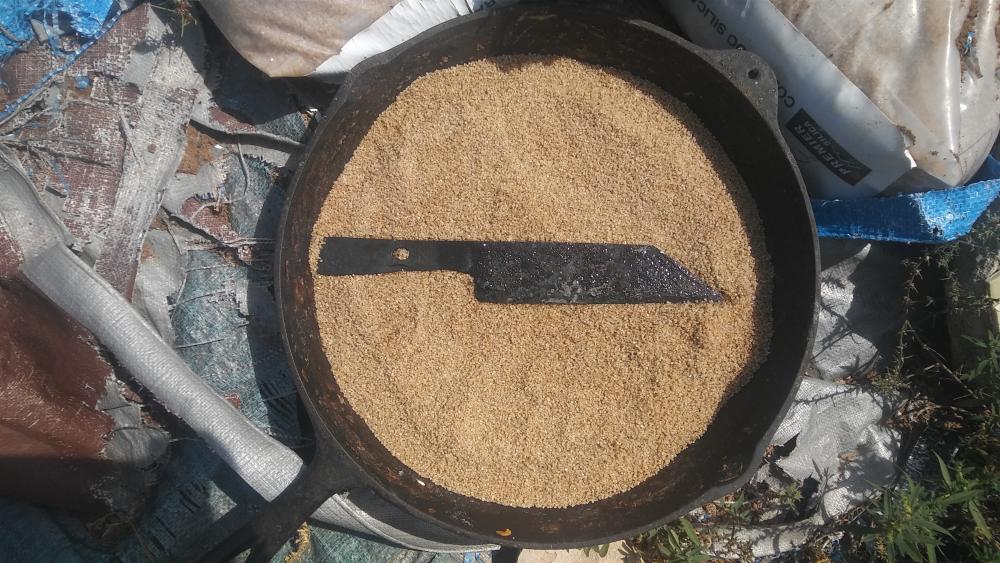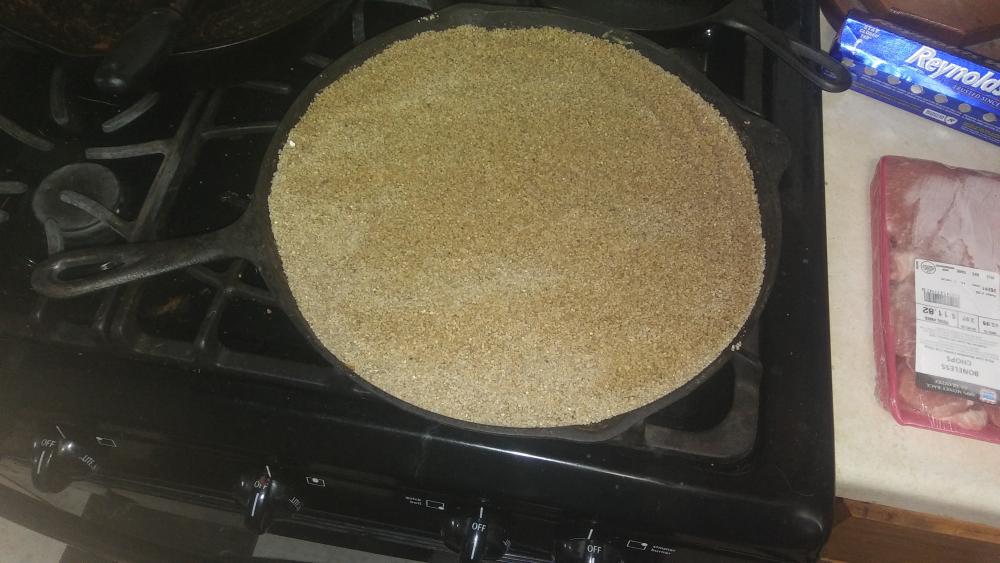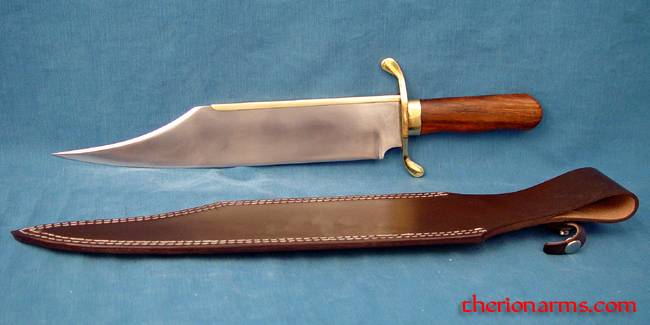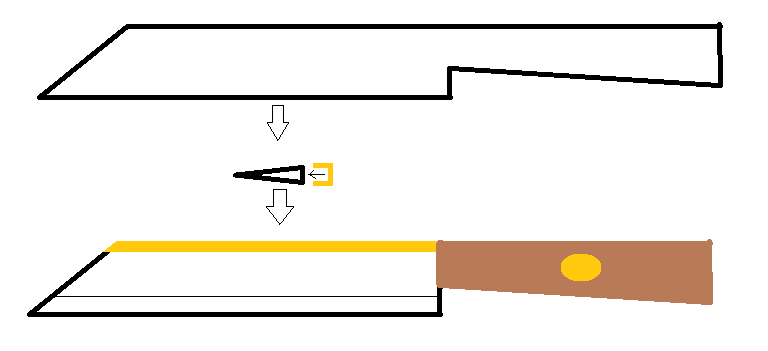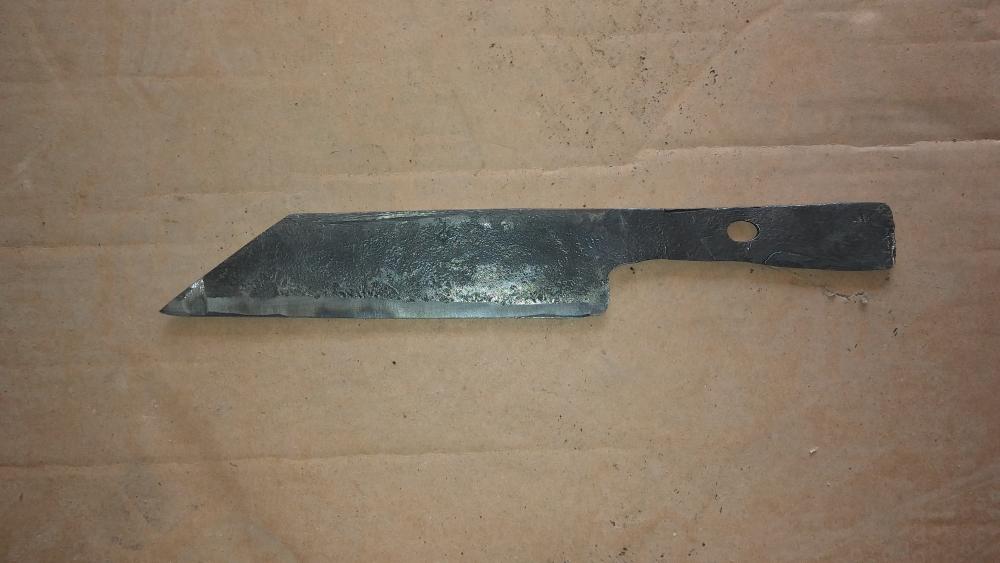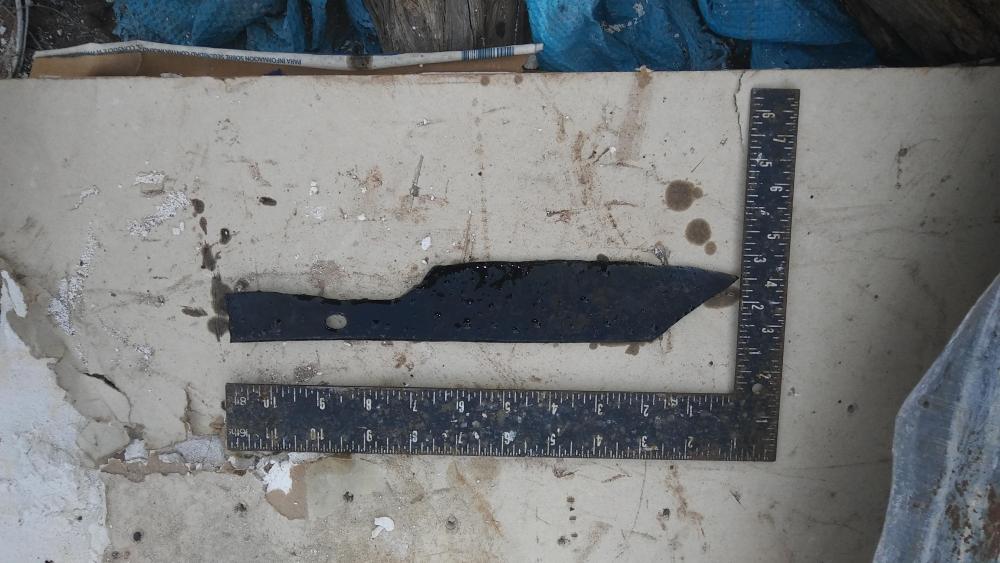-
Posts
153 -
Joined
-
Last visited
Content Type
Profiles
Forums
Articles
Gallery
Downloads
Events
Everything posted by Tzelik Hammar
-
That is a great idea. I'll try it if the sand didn't work out. The look I got for absconding with a large cast iron skillet and bag of sand and heading towards the forge area means I'm committed to trying this way already haha. My knife casserole! Definitely the strangest thing I've ever put in an oven. Feels like I'm trying to break someone out of jail in an old movie, but with a knife instead of file.
-

Punch and drift
Tzelik Hammar replied to brianbrazealblacksmith's topic in Building, Designing a Shop
Same issue. -
Frosty - If I thought it was going to turn out pristine and gorgeous, yeah, but it will be beaten and slightly ragged like most first attempts I make. Should fit the look I want nicely. Mr. Stevens - I am going to re-heat and fix some issues, then re-treat it with the sand suggested by Frosty. It skated pretty well after the quench, but cooking it softened it up, it seems.
-
idea comes from a bowie knife my dad had that looked like the one attached. Sorry if my descriptive skills were lacking, im not sure how to describe it best, It just appears in my head and wont go away. Yessir. Done and done. I was also told later the stove heats erratically (not my stove). definitely going with my own stove and a pan of sand this next go. I have nearly a ton of store-bought sand leftover from some masonry work on my parent's house, will that work?
-
Ended up using a cutting torch at work to cut off enough for a hot guillotine, going to finish that today. Also cutting out a cutter to fit in the hardy hole and a bending fork as suggested. Seems that if it's tough and abrasion resistant it should make great hardy tools.
-
Awesome, thanks all. I'll try the pan of sand after I redo it this weekend. I was straightening the edge and ended up working some soft spots. A question for someone who knows more than I, I want to lay a thin layer of copper or brass over the spine for looks, should I notch the start of the handle and set it in flush or build the handle up to cover the end? I left the handle a little bigger than it needs to be because I want sure about that. As for finishing it before baking, it's important this one looks rough. It's the aesthetic I'm after. Filing that away for future reference though.
-
Hrmm. Backwards result from what I tried to achieve then. So should I return to the forge for a requench? Would a different quenching medium change the heat treat result? I used oil, but I could use water or maybe even mix up some brine. I could probably anneal it and work it with the file to try and even the thickness.
-
Looking at the picture its primarily 440 with the cutting edge and spots (maybe thin areas?) 540. I read up on the threads but can't seem to grasp of it's bad or not.
-
Finished the forge work on this today, quenched fine and baked it at 450 for an hour. Ended up tannish with purple areas, little confused because it's my first time heat treating (I made stock removal knives in the past from finished metals) Are the colors right for a functional knife or should I try again. Just concerned that the purple is in some random spots. The edge is purple too. Wish I could keep it that color. Image is post quench, pre-treat. I was just giddy it didn't explode or warp!
-
interesting. ill have to see about that then.
-
I figured I could cut out and form the edge of a bigger drum into a little shelf so things don't fall off the edge. I have access to shallower drums though, if its just plain better. Wouldn't mixing charcoal in add all sorts of impurities and possibly trash out my work?
-
I think this is the right place to post this, not 100%. So, my hand crank little forge is still in action, but being a portable rivet forge, it lacks an actual firebox, and for me, an amateur smith, it makes it very hard to control the hot spot as I need to, as well as making the startup a real pain. Although it currently functions, I noticed after my bout with anthracite last weekend that the blower's cast iron mount is cracked pretty bad, so I am thinking of either modifying the existing forge (challenging), or just pushing it in a corner and building a new one (without a hand crank >.>) (maybe less challenging?). . Repairing the bracket would probably mean attempting to make a new one, as it is broken alongside a previous repair from before I got it. As for the firebox, I was thinking about dropping a brake drum in the large open forge pan, over the tuyere grill and just using it like that. I "work" (don't get paid but I keep showing up and doing what I'm told because I love learning the trade) in a mechanic shop and have access to lots of fun scrap related objects, so I was thinking of setting up a large brake drum style forge if I chose to start from scratch. I also have a 4'x4' sheet of 3/8s sheet steel from a previous project that I was going to use as a base for a treadle hammer, but might be ok for the meat of a table-style forge. I intend to keep working with anthracite, simply because its cheap and easy to get for me. My question is really: Repair and make do, or build anew?
-

Common Beginner Mistakes
Tzelik Hammar replied to Ridgewayforge's topic in Blacksmithing, General Discussion
Two bits from me, don't start with knives, and practice making roses. They are great for hammer control and people love them. -
On the upside, is very pretty and I really like the handle concept. How is the balance with all that brass?
-
Oh, I'm AM, adequately medicated
-

My next inline treadle hammer design
Tzelik Hammar replied to Jason M's topic in Power Hammers, Treadle Hammers, Olivers
What pulls it back up? Am I missing a principle here?- 30 replies
-
- Treadle hammer
- Inline
-
(and 1 more)
Tagged with:
-
And btw frosty, we're on the exact same wavelength. I'm here to spy on the wizards!
-
I'm trying to find the correct term for a third hand, not a pritchel thing, but something more like a step on it (with your foot) and it clamps down to the Anvil face to hold the work, then releases when you step off. What is this called?
-
I'd prefer a miraculous omelette.
-

What did you do in the shop today?
Tzelik Hammar replied to Mark Ling's topic in Blacksmithing, General Discussion
No electricity where I'm forging, had to move it outside City limits so I'm setting up on a small piece of property I own about 3mi out from my house. Thinking of trying to rig a foot treadle. Don't know if the old beast will survive it though. It's already cracked on the blower's cast iron mount. -

What did you do in the shop today?
Tzelik Hammar replied to Mark Ling's topic in Blacksmithing, General Discussion
I worked with anthracite coal for the first time, forging a seax from a lawn mower blade. had xxxx with keeping my hot spot right and ended up with only half a rough out. I also managed to raise a fresh crop of blisters from hand cranking the poor forge for 6 hours! -
Aw.
-
I had a tbi already {used to be a bouncer in Dallas and got laid out with a baseball bat) and aphasia. The stroke aggravated the symptoms and left me in pretty rough shape. My depth perception is still kinda iffy and my balance is... Well, gravity and I have disagreements. I have regained full control of everything but my left pinky, though sometimes I shake some and my left foot drags a bit if I don't focus on my stride. In the last three years I've lost my house to a fire, had a stroke (and recovered with therapy}, lost 217lbs through diet, exercise, and having most of my stomach removed, lost my dad to esophageal cancer and my uncle to COPD, found a good woman who will put up with me, and discovered that my previous lifestyle of a cranky hermit deprived me of the things that make life worth living. I love every second I get to play with fire and iron. I grew up living in fantasy worlds (through reading) and I've come to the conclusion that despite knowing the science behind how smithing works, it's truly magic. Taking base elements of fire, earth (ore/steel), water and air and combining them in different ways to create pure functional art is magic if I've ever read a definition of it. Every second behind the hammer makes me feel at peace and that is something I've never had in my life. It's truly wonderful.
-
Sorry to Necro the thread, but I have a decent amount of this steel and was wondering if it was up to snuff for axes and hammers or if I would need to weld in a cutting edge.

